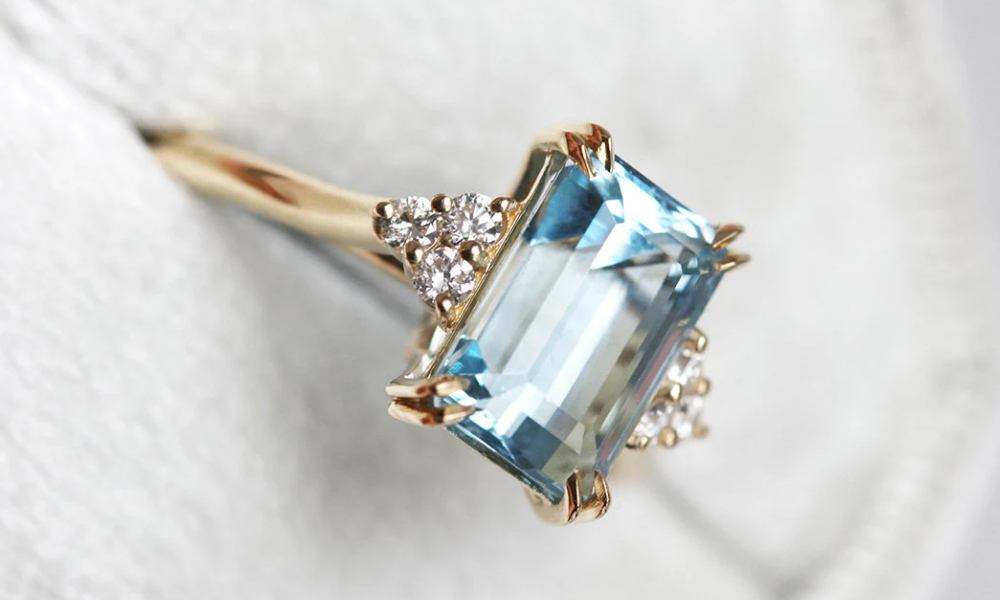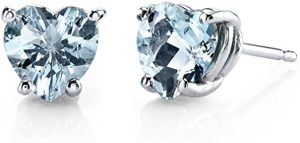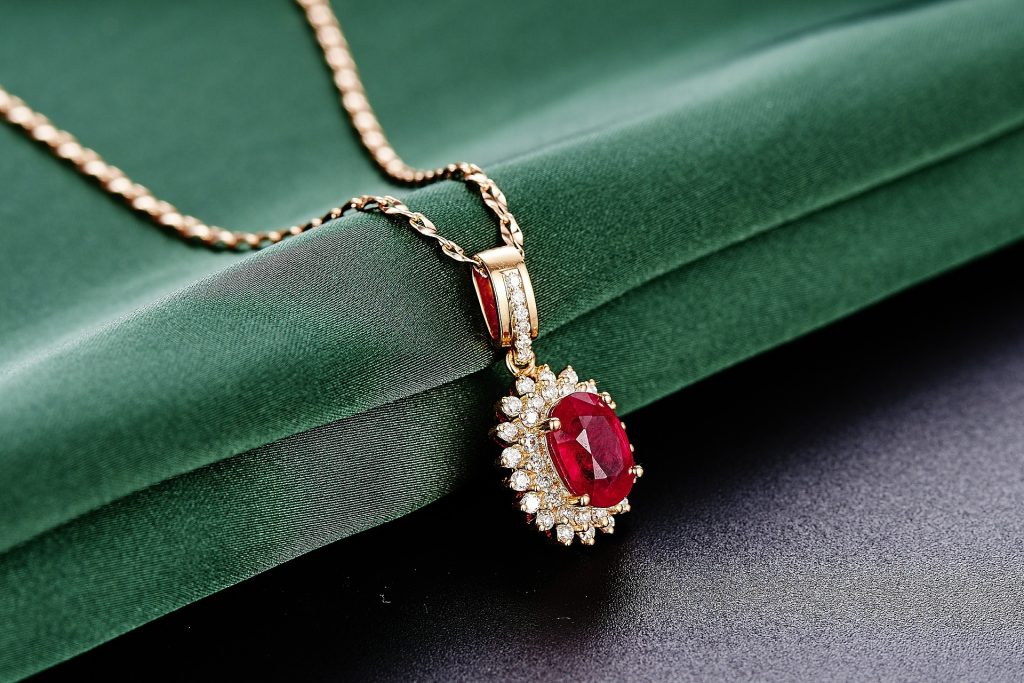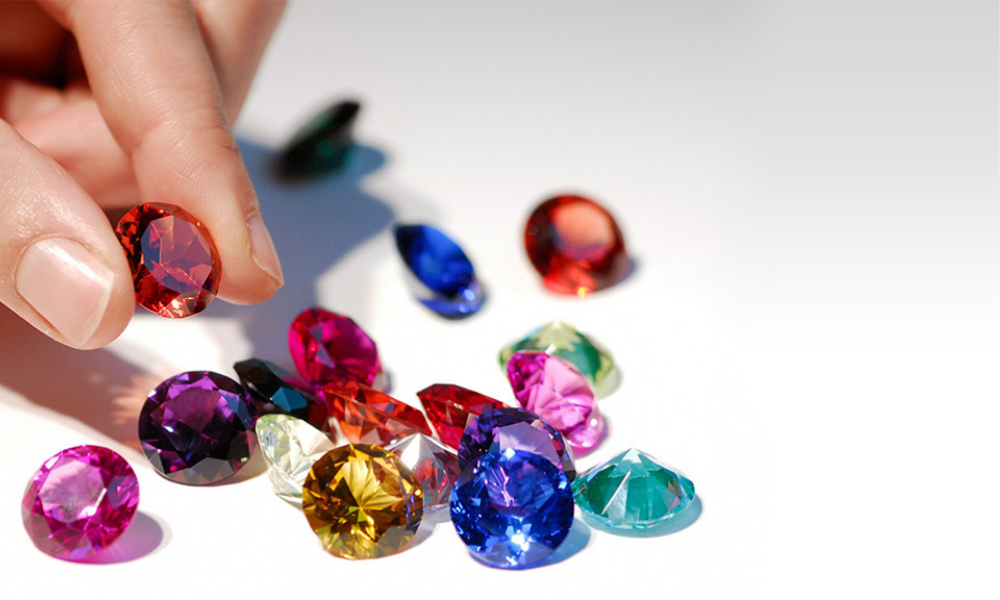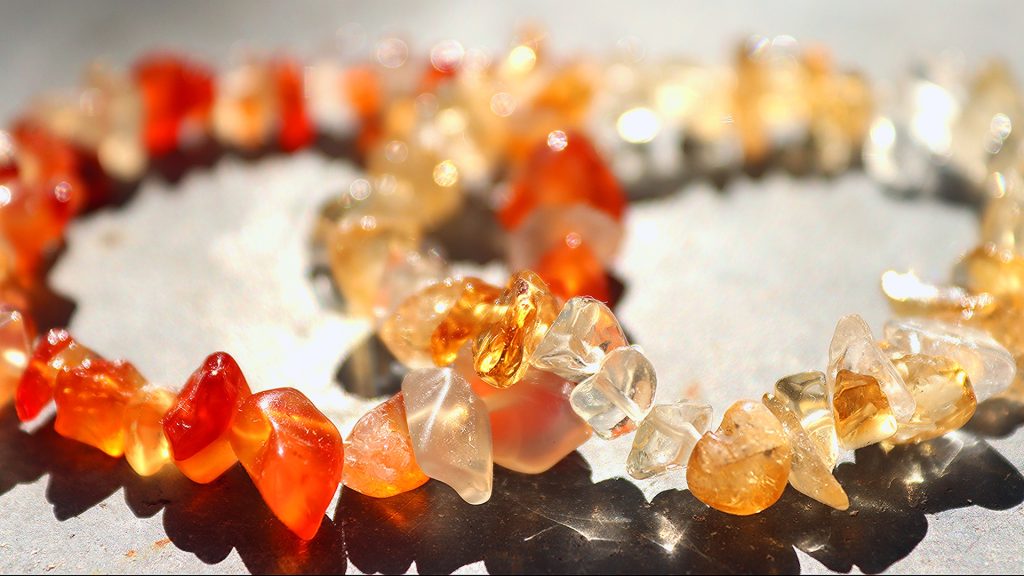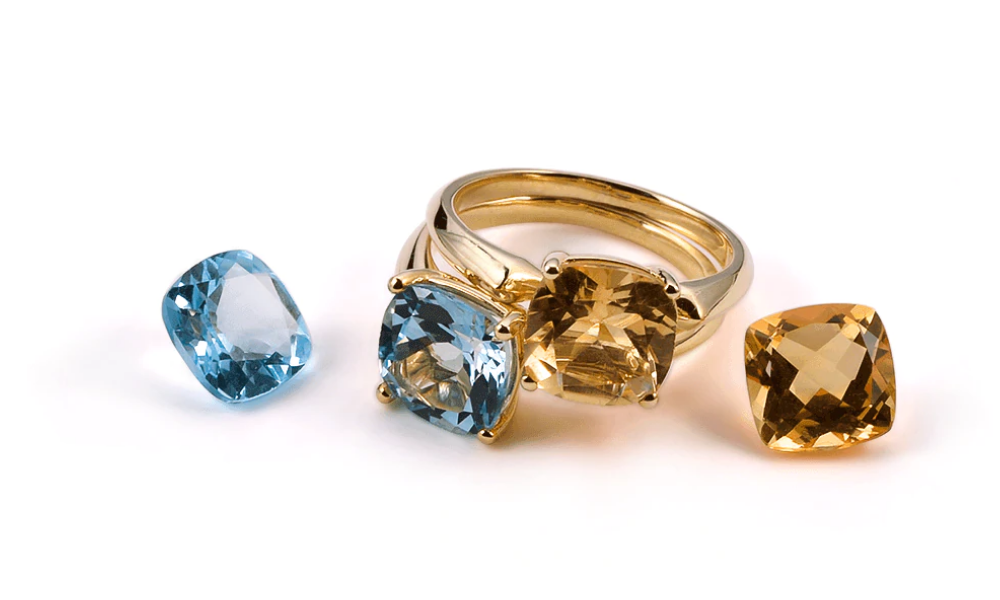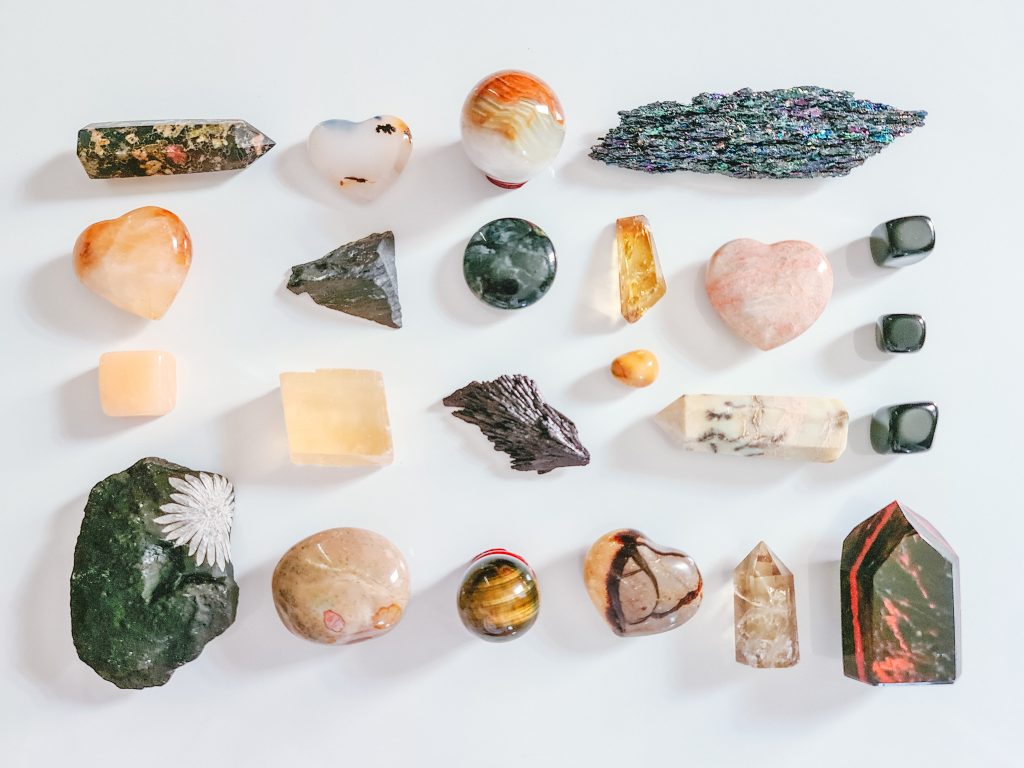The price of an aquamarine gemstone is determined by the color, cut, and clarity. Larger stones are worth more than $1,000 per carat when more significant in size. Compared to larger stones, smaller stones cost between $100 and $250 per carat. If you’re considering purchasing a large stone, make sure to check the carat weight and clarity of the stone beforehand. It is possible to purchase gemstones for several hundred pounds for the most valuable stones. However, when it comes to small gemstones, you can find reasonably priced varieties for as little as $50 to $100 per carat, depending on the variety.
The color of aquamarine is determined by the method it is cut. It is usually apparent to the eye, and the lower the saturation, the better it is. However, if there are any inclusions in the stone, the stone’s value will decrease. With the aid of a jeweler’s jewelry loupe, it is possible to determine the clarity of a stone and its carat weight. The final value of the stone will be determined by the quality of the stone and the carat weight of the stone.
The name aquamarine comes from the Latin word for seawater, which means “seawater stone.” The gemstone aquamarine is associated with beliefs about the ocean. Traditionally, it was believed to calm sea waves, bring good fortune, and increase the happiness of sailors. Poseidon and Neptune favored it during the time of Ancient Rome. Other ancient civilizations highly prized this stone, which was discovered in tombs. The largest known aquamarine measured 19 inches in diameter. Custom cutting could increase the value of this item even further because it is scarce. You can speak with a lapidary in your area to get an estimate on the price.

What is the Value of an Aquamarine Gemstone?
Prospective buyers can determine the value of aquamarine gemstones by consulting an aquamarine value chart. If we were to estimate, a 1-carat aquamarine would cost approximately $675 per carat, and a 2-3-carat aquamarine would cost approximately $1,000 to $1,500 per carat. The price of diamonds would increase by approximately 40 percent to 60 percent if the carat weight increased.
Aquamarines, available in large gem sizes, can be used as an alternative to diamonds, and it also looks good on almost every skin tone. Ensure that you purchase an aquamarine gemstone from a reputable retailer or a member of the National Jewelers’ Association before making your purchase. In addition, the jeweler should provide a warranty or a return policy. Please do not hesitate to contact us if you have any questions or concerns. We would be delighted to assist you in finding the ideal aquamarine gemstone for your special occasion.
Price
Aquamarine, a gemstone with a blue or greenish-blue color derived from the mineral beryl, is one of the most famous colored gemstones due to its popularity. Because of its excellent hardness (7.5 to 8 on the Moss scale) and its delicate color and excellent transparency, it is highly prized. It is also one of the few fine gemstones. It can find in large sizes at reasonable prices, making it even more desirable. The carat weight of larger aquamarines ranges from approximately $300 to $600 per carat. Those with the most saturated colors can expect to pay the most, with exemplary quality Santa Maria aquamarines commanding prices over $1,000 per carat on the market. On the other hand, color saturation should not be confused with tone. These deeper aquae often contain significant amounts of grey and are therefore not nearly as appealing as lighter-toned gems in a purer blue. As a result, select the aquamarine that has the color that most appeals to you.
Prices for aquamarines can vary widely, so it’s essential to understand the factors that influence their value in terms of quality. The “four Cs” of gemstones — color, clarity, carat weight, and cut — impact their price and value, just as they do on all other gemstones. However, in the case of aquamarine, the color is particularly significant.
Color and carat weight are the two most essential price differentiators. . You can find Aqua in various colors ranging from blue to green. Still, the more valuable ones are the pure blues. The color of green aquamarines is often reduced by heating them to remove the yellow tint, making a clean, unheated blue aquamarine with good color saturation a rare and valuable gem.
However, some of the lower-priced gems are extremely pale compared to the rest of the collection. Darker-toned aquamarines are typically the most expensive gemstones to purchase on the market.
It is possible to find smaller aquamarines (less than 5 carats) of good quality at prices ranging from $100 to $250 per carat. Unless the color saturation is exceptionally high, the greenish-blue stones will typically be priced at the lower end of the spectrum.
It is uncommon to find the deeper blues in aquamarines less than 5 carats in weight. As a result of the longer light path, larger stones have deeper colors, and the prices for top colors are significantly higher due to the premium paid for both color and size.
Color
The color of this beautiful gem is due to trace amounts of ferrous iron present in the stone. A wide range of hues, from bluefish green to blue-green to greenish-blue, to deep blue, can be achieved, as can a range of tones ranging from very light to moderately dark. Aquamarines that are darker than a Swiss blue topaz is extremely rare. The color is usually accentuated by the cut because of the light when you do.
It’s possible to come across gemstones marketed as “white aquamarines.” Consider the possibility of colorless beryl, also referred to as goshenites, present in such stones.
Cutting
When cutting aquamarine, the depth of color should be the first thing to consider. It is customary to prefer deep designs such as Barons and emerald cuts. When working with aquamarine, factors should use pavilion mains at a 43° angle for the best brilliance. Using lower crown angles will result in more excellent brilliance, but higher crown angles are frequently used to increase the depth of color.
Aquamarines and other beryl family members are among the most straightforward gems to polish. The most widely used method is diamond polishing. Light aquamarines can appear so brilliantly polished that they can be mistaken for gems with a higher refractive index (RI), especially when polished with a high-quality polish. With a moderate dispersion of 0.014, light stones with high crown angles will be able to display their spectral colors to their best advantage. This results in a stunning gemstone. While the wealthiest colors command the highest prices, a well-cut light aquamarine can be one of the most spectacular examples of gem faceting found anywhere on the planet when it is properly cut.
Care
Even though aquamarines require no special care and can withstand scratches from everyday wear and tear quite well, cut-corner designs and protective settings can still help them remain resistant to chipping and breaking.
Because the majority of aquamarine used in fine gemstone cutting is a spotless material, you will find that most high-quality aquamarines available on the market have excellent clarity grades. As a result of aquamarine’s transparency and light color, inclusions are apparent and can detract from the overall appearance of the gemstone. When an aquamarine is graded as “loupe clean” or “almost loupe clean,” any inclusions are not visible to the naked eye and, therefore, are of high quality.
Nonetheless, some inclusions found within aquamarines may not respond well to mechanical cleaning techniques such as ultrasound or steam, increasing the risk of shattering. As a result, you should first consult with a gemologist to determine whether or not your gemstones can withstand these cleaning methods. Of course, you can always clean your aquamarines with a soft brush, a mild detergent, and warm water to keep them safe. For additional recommendations, please see our gemstone jeweler care guide.
What is the Maximum Size of an Aquamarine?
Aquamarines come in a wide range of sizes, and lapidaries have cut gems weighing several hundred carats that are far too large to be worn. In pegmatite, massive beryl crystals have been discovered, but they are never of gem quality. On the other hand, Aquamarines can be very large and still be of gem quality.
In Marimba, Trefoil Otoni, Brazil, a blue-green crystal was discovered. This irregular prism, transparent from end to end and weighed nearly 243 pounds, measured 19 inches long and 16 inches across.
The 134-pound Martha Rocha aquamarine, discovered in Brazil, yielded more than 300,000 carats of superb blue gems. In 1910, the giant crystal was discovered that weighed 229 pounds but only yielded 200,000 carats of cut gems.
The Dom Pedro, a 10,363-carat carved obelisk, is housed at the Smithsonian Institution and is the world’s largest cut aquamarine.
67.35 (blue) and 60.90 (greenish) British Museum (Natural History) (London, England); 879 (sea-green, oval).
272, 215, and 160 at the American Museum of Natural History in New York; 355 (Sri Lanka), 144.5 (Brazil).
What is the Source of Aquamarine Gemstones?
Rio de Janeiro, Brazil, is the world’s most important source of fine aquamarine gems. Minas Geris, Rio Grande do Norte, Care, and other states are included.
Madagascar has more than 50 specific locations where fine blue gem material is produced in abundance.
Among the other notable sources are the ones listed below:
United States: San Diego County, California (with little gem material); Mt. Antero, Colorado; Connecticut (with some gem material); Maine; and North Carolina.
Californian aquamarine crystal (aquamarine crystal) Murrains mine, Russia (and other localities).
Afghanistan, China, Mozambique, Myanmar, Pakistan, Sri Lanka, Vietnam, and Zimbabwe are represented.
Mt. Surprise, North Queensland, Australia (miniature).
Koror, Madras, and Kashmir are three cities in India (medium blue color).
Rossing, Namibia (in pegmatite’s).
Joss, Nigeria (abundant material, some delicate color).
What is the Meaning of Maxine Aquamarine?
Maxine (pronounced mah-SHE-she), a very dark blue aquamarine, was introduced to the market in the 1970s, but the color of this irradiated stone was unstable. Buyer beware if you’re offered a very deep blue aquamarine, even though these stones have mostly vanished from the market.
The lack of pleochroism distinguishes the Maxine from natural aquamarine. The color dichroism of natural aquamarines is blue and colorless. On the other hand, Maxine lacks pleochroism, and it only shows blue when viewed from any angle. Natural aquamarine and the Maxine have different absorption spectrums. You can see a narrow line at 6950, a strong line at 6540, and weak lines at 6280, 6150, 5500, and 5810 with a spectroscope. The spectrum of natural aquamarine differs significantly, with broadband at 4270 and a diffuse band at 4560.
A dichroscope can also distinguish between a Maxine aquamarine and a natural stone. When viewing a Maxine, both windows remain blue, and one window should be colorless or pale yellowish when viewing an untreated specimen.
Are there Aquamarines that have been created in a Lab?
Aquamarines can be synthesized, and an examination under a microscope may reveal some indications that they were created in a laboratory. On the other hand, professional gem labs have sophisticated instruments that can tell the difference between natural and synthetic aquamarine.
Are Aquamarine Gemstones Treated in any way?
Most aquamarines are found in the ground with a greenish tint, but this disappears when heated to 375° C, resulting in pure blue color. It is very common to heat treat aquamarine to remove the green tint that it has acquired. In the past, I did this regularly. In recent years, a more sophisticated public has begun to recognize the value of slightly green, untreated aquamarines. It is, however, impossible to distinguish between this heating process and others. As a result, gem graders should describe any pure blue aquamarines as “probably heat-treated” if they are found to be so.
Conclusion
Aquamarine is a beryl variety that ranges in color from blue to greenish-green. Although the carat weight does not affect its value, the price does. Apparel and Marta Rocha, the two most enormous stones, were discovered in Brazil. Both are 173 carats and have produced over 5600 carats of cut gemstones. An aquamarine gemstone’s color shade, clarity, and carat weight are essential factors determining its price. Aquamarine stones come in a wide range of sizes and colors. Some lapidaries have discovered beryl crystals weighing several tones, while others have cut gems weighing hundreds of carats. These stones, however, were not considered gem quality. Trefoil Otoni, Brazil, discovered a sizeable blue-green crystal that measured over 19 inches long and sixteen inches wide. It was nearly 243 pounds in weight.

